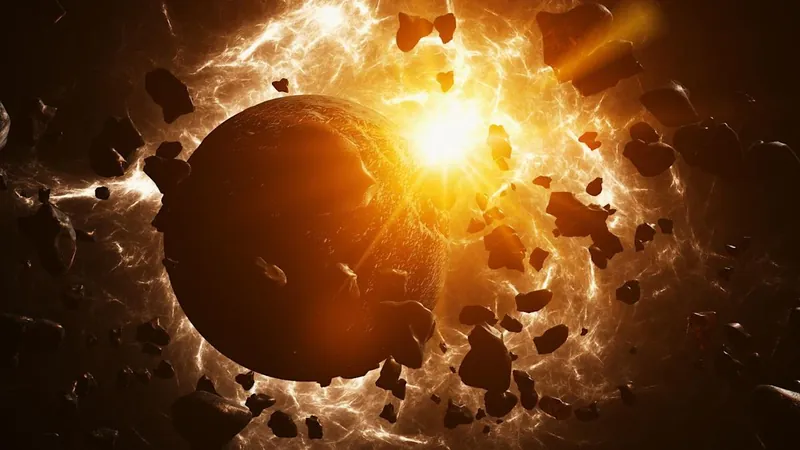
A Daring Blueprint to Terraform Mars: Could It Really Work?
2025-04-12
Author: Kai
Transforming Mars: A Trek Towards Human Colonization
For humans to thrive on Mars, we first need to breathe life into its inhospitable atmosphere. One audacious proposal suggests harnessing celestial objects from the Kuiper Belt, loaded with vital light elements, and crashing them into Mars to raise its atmospheric pressure.
Celestial Solutions and Crushing Challenges
This scheme isn’t without peril; the icy bodies in the Kuiper Belt may destabilize as they approach the Sun, posing serious risks. But as we dream of a long-term human presence on the Red Planet, the obstacles of extreme cold and a lethargic atmosphere loom large. Previous NASA attempts at heating Mars have revealed that existing technology falls short. Visionaries like Elon Musk have suggested controversial measures including using nuclear weapons on the planet’s ice caps, while others prefer more subdued tactics like spraying nanoparticles into the air.
Mars' Thin Atmosphere: A Fatal Flaw for Human Life
Mars suffers from a notoriously thin atmosphere, which leads to dangerously low pressure conditions—a significant hurdle for a species made up of 65% water. Without sufficient atmospheric pressure, human blood would boil directly upon exposure to marsian air. So to sustain human life, Mars needs a substantial influx of gases.
An Explosive Proposition from Science's Frontier
During the recent Lunar and Planetary Science Conference in Texas, Leszek Czechowski from the Polish Academy of Sciences unveiled an explosive plan. He explained that creating a breathable atmosphere is attainable through the importation of materials from celestial bodies. "We should utilize Kuiper Belt (KB) objects for terraforming," he stated.
The Journey from the Kuiper Belt: A Path Less Traveled
Czechowski envisions a future where advanced humans could develop powerful thermonuclear reactors and ion engines to steer icy Kuiper Belt bodies towards Mars over several decades. His research also highlights the possibility of utilizing resources from the main asteroid belt—though it’s largely lacking in light elements—and the distant Oort Cloud, which is currently impractical due to the enormous travel time.
A Treasure Trove of Resources Awaits
These distant celestial objects are treasure chests filled with volatile substances, including water, carbon dioxide, nitrogen, and even organic compounds like methane. Once enough of these elements land on Mars, Czechowski's vision includes introducing specially engineered organisms that could convert the resources into breathable oxygen.
A Herculean Task Awaits Humanity
Of course, this ambitious plan requires an immense amount of energy—comparable to what humanity consumes over a six-month to several-year period. Additionally, the risk of destabilizing these Kuiper Belt bodies en route to Mars could lead to catastrophic impacts, igniting earthquakes and volcanic eruptions on the Martian surface.
Though daunting, this plan sheds light on the lengths to which humanity may need to go to turn Mars into a habitable world. After all, who said terraforming the Red Planet would be anything less than monumental?


 Brasil (PT)
Brasil (PT)
 Canada (EN)
Canada (EN)
 Chile (ES)
Chile (ES)
 Česko (CS)
Česko (CS)
 대한민국 (KO)
대한민국 (KO)
 España (ES)
España (ES)
 France (FR)
France (FR)
 Hong Kong (EN)
Hong Kong (EN)
 Italia (IT)
Italia (IT)
 日本 (JA)
日本 (JA)
 Magyarország (HU)
Magyarország (HU)
 Norge (NO)
Norge (NO)
 Polska (PL)
Polska (PL)
 Schweiz (DE)
Schweiz (DE)
 Singapore (EN)
Singapore (EN)
 Sverige (SV)
Sverige (SV)
 Suomi (FI)
Suomi (FI)
 Türkiye (TR)
Türkiye (TR)
 الإمارات العربية المتحدة (AR)
الإمارات العربية المتحدة (AR)